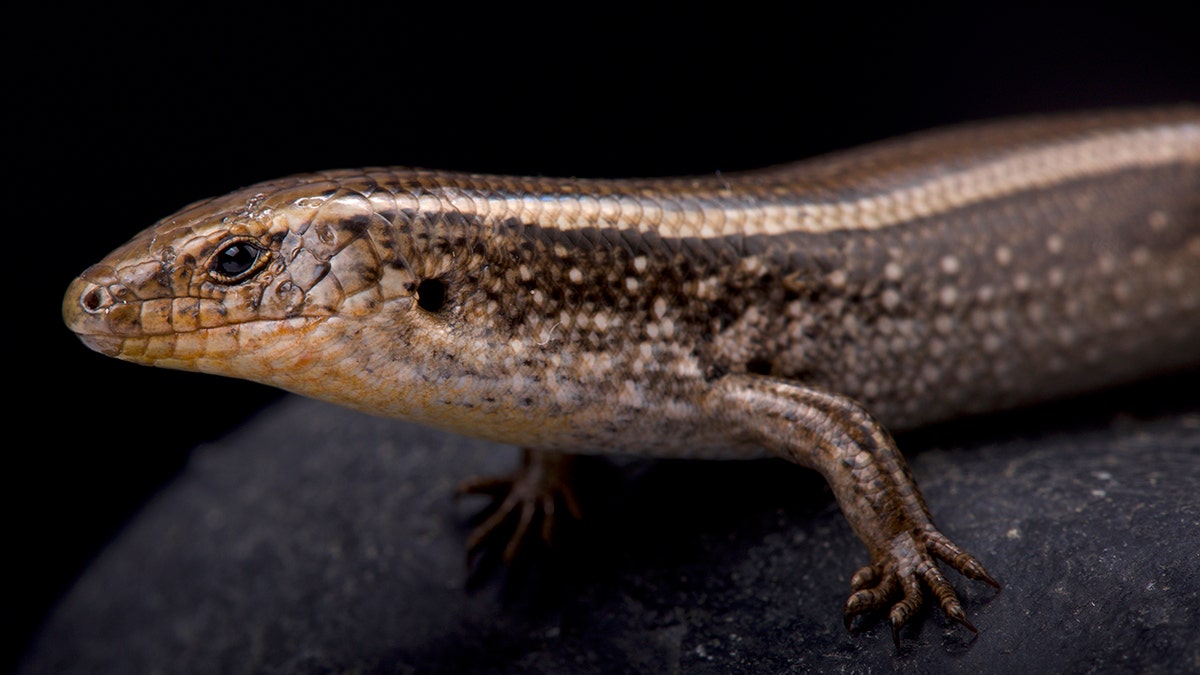
western three-toed skink, Chalcides striatus. (Credit: iStock)
A “very unusual discovery” has been uncovered by Australian scientists in a world first.
Researchers at the University of Sydney have witnessed an Australian lizard that normally carries a live baby lay three eggs first and then, weeks later, give birth to a live baby from the same pregnancy.
It’s the first time such a strange event has been documented in a single litter of vertebrate babies, or animals with backbones.
The three-toed skink is one of only a handful of rare “bimodally reproductive” species, where some individuals lay eggs and others give birth to live babies.
But up until now no vertebrate has ever been seen doing both in one litter.
“It is a very unusual discovery,” said Dr. Camilla Whittington of The University of Sydney.
The three-toed skink is native to the east coast of Australia.
In the northern highlands of New South Wales the animals normally give birth to live young, but those living in and around Sydney lay eggs.
“We were studying the genetics of these skinks when we noticed one of the live-bearing females lay three eggs,” Dr. Whittington said.
“Several weeks later she gave birth to another baby. Seeing that baby was a very exciting moment.”
Researchers used advanced microscopy to reveal the egg coverings in their study published in Biology Letters on Wednesday.
Dr. Whittington said there were at least 150 evolutionary transitions from egg laying to live-bearing in vertebrates.
“The earliest vertebrates were egg layers, but over thousands of years, developing embryos in some species were held inside the body for longer until some animals began to give live birth,” she said.
“People mostly think about humans and other mammals giving birth. But there are many species of reptile that give birth, too.”
Dr. Whittington said the unusual observation in a single litter showed the three-toed skink was an ideal model for understanding pregnancy.
“It makes Australia one of the best places in the world to study the evolution of live birth because we can watch evolution in action,” she said.
“Put in the context of evolutionary biology, being able to switch between laying eggs and giving live birth could allow animals to hedge their bets according to environmental conditions.”
She said it also made the skink, which looked like a baby snake with tiny legs, one of the “weirdest lizards in the world”.
Further research into this small lizard, which seems to occupy a grey area between live birth and egg laying, will help determine how and why species make major reproductive leaps.
This story originally appeared in news.com.au.
